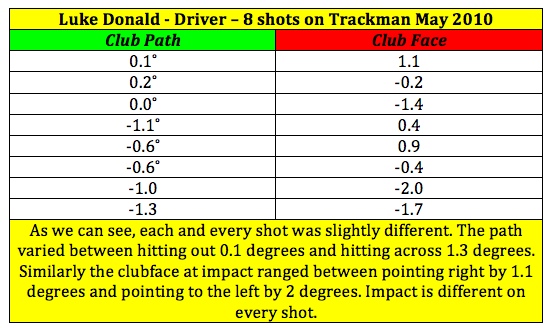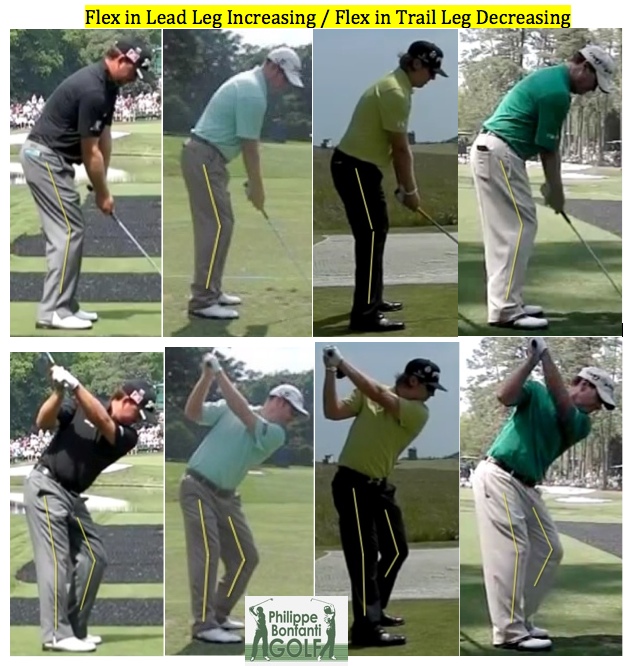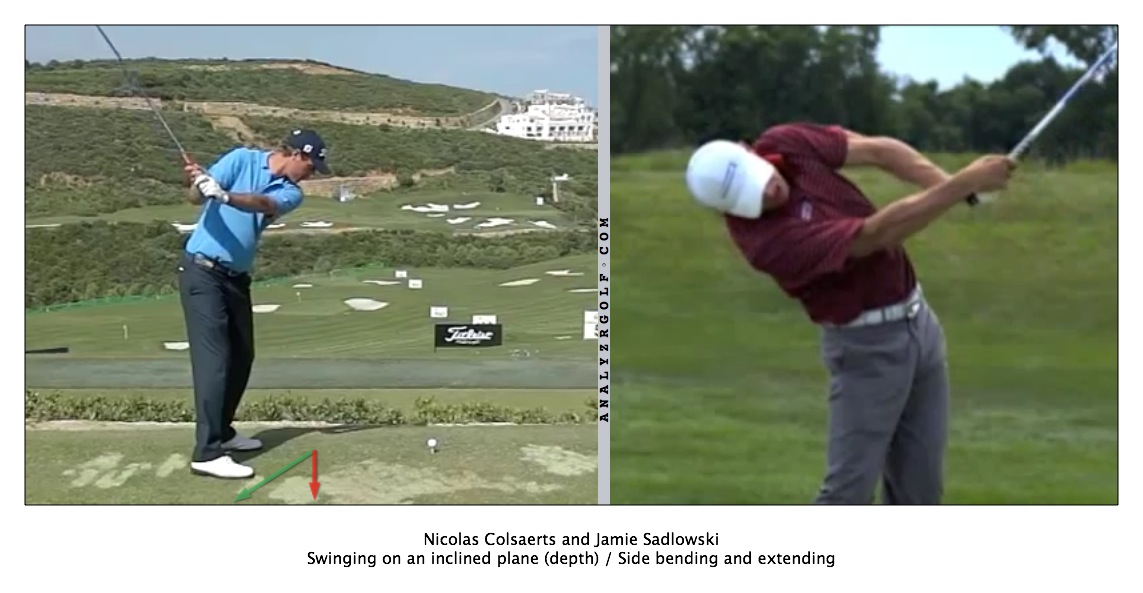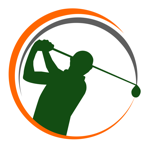Paradigm Shift?
14/11/14 11:05 Filed in: Long Game | dorset golf
Is a Paradigm Shift occurring in the world of golf instruction?
To answer this question we first need to define the term “paradigm shift” and explain where it comes from. American philosopher of science Thomas Kuhn coined the term Paradigm Shift in his 1962 publication titled “The Structure of Scientific Revolutions”. His conclusion was that progress in science occurs in the form of “paradigm shifts” rather than as a continual and gradual process. He rejected the notion that all scientific processes and belief systems are equal. He also stated that when a paradigm shit occurs the new paradigm is not only newer but also improves the previous one.
Now lets examine just a few of the well rehearsed clichés within golf instruction circles that often do more harm than good or at the very least slow down the learning process for the pupil.
Myth #1. The clubpath dictates the initial starting direction of the golf ball
In fact it is predominantly the clubface that dictates the direction in which the golf ball launches. This directly contradicts the notion that players should swing in the direction they would like the ball to start and aim the clubface where they would like the ball to finish. This knowledge is essential for making a correct diagnosis of possible faults affecting impact position and learning how to hit shots with different trajectories. Imagine a golfer wanting to hit a draw, for a right-handed golfer this is a shot that starts to the right of the target and then curves back towards the target. Assuming centre contact, the clubface will need to be pointing to the right of the target at impact for the ball to start to the right and the path will have to be more to the right than the amount the clubface is pointing to the right. If the clubface is pointed to the left of the target or even at the target at the moment of impact it will not be possible to hit a draw shot. Remember, the clubface is the projection tool.
Myth #2. The fundamentals are aim, grip, stance, alignment and ball position
While these are undoubtedly very important and will have a big effect on the way the golf ball is projected, they are not factors that the world’s best golfers demonstrate uniformly. This implies that they are variables. A fundamental is something that all of the world’s best players demonstrate equally. The lowest common denominator that they possess is their ability to hit the ground in the same spot, time after time, on the target side of the golf ball. In other words, hit the small ball before the big ball! This should be the first priority for the average golfer seeking to improve. Huge strides can be made once a pupil learns how to make solid ball contact.
Myth #3. All players are the same at impact
The reality is that not even the best golfers can replicate the exact same impact conditions time after time. Every shot is slightly different to the one before it and also to the one after. What players do demonstrate, however, are set patterns and relationships that they repeat on a regular basis (for example a face that is closed to the path).

Myth #4. Roll your forearms to hit a draw
This stems from the belief that the golfer needs to close the face for the moment of impact. Unfortunately, as we have just outlined, a face that is closed to the target at impact is not conducive to hitting a draw shot. Furthermore, rolling the forearms approaching impact has the effect of sending the clubhead to the outside and above the plane thus leading to an out/in swing path and a handle that is lowering and leaning away from the target at impact. The very opposite of what a golfer needs to do hit the ball solidly (let alone draw the ball!).
Myth #5. Keep the rear leg bent and the golf swing is like a spring
It is often said that the rear leg should remain flexed during the course of the backswing and that the upper body should turn while the hips and lower body resist this turning action. The upper body coiling against the lower body resistance is described as a spring. The effect of all this is that the shoulder complex will have a limited range of motion. Consequently some golfers will start to flex and raise their arms in order to complete their backswings and others will simply make very short backswings. Both of these scenarios are detrimental to hitting the ball solidly, far and high. If, however, golfers allow their trail leg to straighten during the backswing this will allow the hips to turn which will allow the shoulders to turn. The golfer is now loading the catapult and a very achievable 45˚ hip turn combined with a very achievable 45˚ shoulder turn make for a full 90˚ turn at the top of the backswing. A whole industry has fed off telling golfers that they are not flexible enough to play golf as a consequence of this damaging advice. A golf swing that hits the ball consistently, far enough and with a predictable curve is not beyond the scope of the average golfer.

Myth #6. Maintain your spine angle
What is often referred to as maintaining the spine angle is actually about the golfer’s inclination to the ground. This must be maintained to keep the head stationary. In order for a player to maintain their inclination to the ground the spine will need to constantly change its angle. For a right-hander it will turn but it will also move from a left tilt to a right tilt and it will extend-flex-extend.
Myth #7. Shift your weight over your back foot to generate power
This advice is given in accordance with the misplaced idea that you need to “load” your weight into your trail leg in order to generate power. The reality is that one of the major power sources in the golf swing is first and foremost the ability to strike the golf ball solidly (fat shots tend not to go very far!). Shifting the weight to the back foot necessitates at the very least an equal sway back to the front foot thus making it very difficult to time and increasing the probability of the clubhead’s arc bottoming out before the golf ball has been reached. To generate power golfers must concentrate their efforts on hitting the ball solidly, using the body as a lever as it side tilts and moves from flexion to extension, and on swinging the clubhead on a tilted angle around the body (think depth not width).

As we have seen, some of the most recognisable and often repeated buzzwords heard on practice tees around the world can be misleading. Here is just a small sample of quotes from some of the world’s leading instructors and tour players on how to swing a golf club from the last ten years followed by some more recent quotes
Old Quotes:
“I will keep my right knee flex”
“square the face at impact”
“flex your knee for big hits”
“power comes from the hips rotating less than the upper body on the backswing”
“give the ball a right hand slap for explosive contact”
“you can tell the good players from the bad players by looking at their grip”
“get wide, stay wide”
“bad position is left shoulder down”
“to fix your slicing, use the left arm to square up the face at impact”
Recent Quotes (2011-2012):
“keep as much weight forwards as possible while keeping your head centred”
“round your swing and produce shots you’ve only dreamed of”
“shift your hips and lead with your hands for great contact”
“the bottom of the swing, where the club hits the ground, is a few inches in front of the ball”
“the biggest mistake amateurs make is hitting off their back foot”
“ideally, your hips turn away from the target as much as they can”
“if you look at Nick Faldo which shoulder is lower? The left shoulder is lower at the top of the backswing, so actually he’s leaning left”
“I try to stay centred as I swing back, not letting my head move to the right. Staying over the ball allows me to turn my left shoulder downward on a steeper angle”
It does appear that the message delivered by golf instructors all over the world is gradually changing as more information becomes available. This can only be a good thing for the average golfer who dearly wants to improve his or her golf game. Kuhn states: “Successive transition from one paradigm to another via revolution is the usual developmental pattern of mature science”. Almost inevitably, a few feathers have been ruffled along this fast paced journey of discovery. The overriding objective for all instructors, however, should be to remain passionate about their work and to do their utmost to help their students improve, irrespective of the extent to which new ideas challenge long held beliefs and methods. In the words of a wise instructor, the goal for all of us should be to “keep the spirit of the game alive” not in a manner of confrontation but rather in a manner of cooperation for the good of the sport we all love.
To answer this question we first need to define the term “paradigm shift” and explain where it comes from. American philosopher of science Thomas Kuhn coined the term Paradigm Shift in his 1962 publication titled “The Structure of Scientific Revolutions”. His conclusion was that progress in science occurs in the form of “paradigm shifts” rather than as a continual and gradual process. He rejected the notion that all scientific processes and belief systems are equal. He also stated that when a paradigm shit occurs the new paradigm is not only newer but also improves the previous one.
Now lets examine just a few of the well rehearsed clichés within golf instruction circles that often do more harm than good or at the very least slow down the learning process for the pupil.
Myth #1. The clubpath dictates the initial starting direction of the golf ball
In fact it is predominantly the clubface that dictates the direction in which the golf ball launches. This directly contradicts the notion that players should swing in the direction they would like the ball to start and aim the clubface where they would like the ball to finish. This knowledge is essential for making a correct diagnosis of possible faults affecting impact position and learning how to hit shots with different trajectories. Imagine a golfer wanting to hit a draw, for a right-handed golfer this is a shot that starts to the right of the target and then curves back towards the target. Assuming centre contact, the clubface will need to be pointing to the right of the target at impact for the ball to start to the right and the path will have to be more to the right than the amount the clubface is pointing to the right. If the clubface is pointed to the left of the target or even at the target at the moment of impact it will not be possible to hit a draw shot. Remember, the clubface is the projection tool.
Myth #2. The fundamentals are aim, grip, stance, alignment and ball position
While these are undoubtedly very important and will have a big effect on the way the golf ball is projected, they are not factors that the world’s best golfers demonstrate uniformly. This implies that they are variables. A fundamental is something that all of the world’s best players demonstrate equally. The lowest common denominator that they possess is their ability to hit the ground in the same spot, time after time, on the target side of the golf ball. In other words, hit the small ball before the big ball! This should be the first priority for the average golfer seeking to improve. Huge strides can be made once a pupil learns how to make solid ball contact.
Myth #3. All players are the same at impact
The reality is that not even the best golfers can replicate the exact same impact conditions time after time. Every shot is slightly different to the one before it and also to the one after. What players do demonstrate, however, are set patterns and relationships that they repeat on a regular basis (for example a face that is closed to the path).

Myth #4. Roll your forearms to hit a draw
This stems from the belief that the golfer needs to close the face for the moment of impact. Unfortunately, as we have just outlined, a face that is closed to the target at impact is not conducive to hitting a draw shot. Furthermore, rolling the forearms approaching impact has the effect of sending the clubhead to the outside and above the plane thus leading to an out/in swing path and a handle that is lowering and leaning away from the target at impact. The very opposite of what a golfer needs to do hit the ball solidly (let alone draw the ball!).
Myth #5. Keep the rear leg bent and the golf swing is like a spring
It is often said that the rear leg should remain flexed during the course of the backswing and that the upper body should turn while the hips and lower body resist this turning action. The upper body coiling against the lower body resistance is described as a spring. The effect of all this is that the shoulder complex will have a limited range of motion. Consequently some golfers will start to flex and raise their arms in order to complete their backswings and others will simply make very short backswings. Both of these scenarios are detrimental to hitting the ball solidly, far and high. If, however, golfers allow their trail leg to straighten during the backswing this will allow the hips to turn which will allow the shoulders to turn. The golfer is now loading the catapult and a very achievable 45˚ hip turn combined with a very achievable 45˚ shoulder turn make for a full 90˚ turn at the top of the backswing. A whole industry has fed off telling golfers that they are not flexible enough to play golf as a consequence of this damaging advice. A golf swing that hits the ball consistently, far enough and with a predictable curve is not beyond the scope of the average golfer.

Myth #6. Maintain your spine angle
What is often referred to as maintaining the spine angle is actually about the golfer’s inclination to the ground. This must be maintained to keep the head stationary. In order for a player to maintain their inclination to the ground the spine will need to constantly change its angle. For a right-hander it will turn but it will also move from a left tilt to a right tilt and it will extend-flex-extend.
Myth #7. Shift your weight over your back foot to generate power
This advice is given in accordance with the misplaced idea that you need to “load” your weight into your trail leg in order to generate power. The reality is that one of the major power sources in the golf swing is first and foremost the ability to strike the golf ball solidly (fat shots tend not to go very far!). Shifting the weight to the back foot necessitates at the very least an equal sway back to the front foot thus making it very difficult to time and increasing the probability of the clubhead’s arc bottoming out before the golf ball has been reached. To generate power golfers must concentrate their efforts on hitting the ball solidly, using the body as a lever as it side tilts and moves from flexion to extension, and on swinging the clubhead on a tilted angle around the body (think depth not width).

As we have seen, some of the most recognisable and often repeated buzzwords heard on practice tees around the world can be misleading. Here is just a small sample of quotes from some of the world’s leading instructors and tour players on how to swing a golf club from the last ten years followed by some more recent quotes
Old Quotes:
“I will keep my right knee flex”
“square the face at impact”
“flex your knee for big hits”
“power comes from the hips rotating less than the upper body on the backswing”
“give the ball a right hand slap for explosive contact”
“you can tell the good players from the bad players by looking at their grip”
“get wide, stay wide”
“bad position is left shoulder down”
“to fix your slicing, use the left arm to square up the face at impact”
Recent Quotes (2011-2012):
“keep as much weight forwards as possible while keeping your head centred”
“round your swing and produce shots you’ve only dreamed of”
“shift your hips and lead with your hands for great contact”
“the bottom of the swing, where the club hits the ground, is a few inches in front of the ball”
“the biggest mistake amateurs make is hitting off their back foot”
“ideally, your hips turn away from the target as much as they can”
“if you look at Nick Faldo which shoulder is lower? The left shoulder is lower at the top of the backswing, so actually he’s leaning left”
“I try to stay centred as I swing back, not letting my head move to the right. Staying over the ball allows me to turn my left shoulder downward on a steeper angle”
It does appear that the message delivered by golf instructors all over the world is gradually changing as more information becomes available. This can only be a good thing for the average golfer who dearly wants to improve his or her golf game. Kuhn states: “Successive transition from one paradigm to another via revolution is the usual developmental pattern of mature science”. Almost inevitably, a few feathers have been ruffled along this fast paced journey of discovery. The overriding objective for all instructors, however, should be to remain passionate about their work and to do their utmost to help their students improve, irrespective of the extent to which new ideas challenge long held beliefs and methods. In the words of a wise instructor, the goal for all of us should be to “keep the spirit of the game alive” not in a manner of confrontation but rather in a manner of cooperation for the good of the sport we all love.
